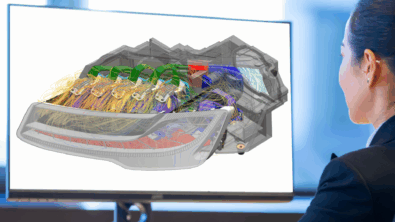How Can We Improve the Global Food Chain Using Simcenter 3D Motion

There is no doubt the world’s population is growing at an alarming rate. To help put that into perspective, we are currently hovering approximately at 7.5 billion people worldwide. In 2050, it will be approximately 9.5 billion.
Through the perspective of agriculture, that is 9.5 billion hungry people that need to be fed. That’s a lot of people! So the rising issue is how are we going to improve or better farming practices to be able to feed the world? Agricultural equipment companies must adapt to these rapidly changing demands and develop more efficient and automated machines that can deliver more food. The two key objectives for agricultural companies are efficiency and productivity.

One company that is already exemplifying this is AMAZONE. AMAZONE is a family-owned manufacturer of agricultural equipment. They invest highly in their products so that their customers can receive the most out of them. One way they have invested in their products is getting adjusted to simulation. AMAZONE uses Simcenter 3D, NX, and Teamcenter collectively to predict motion and strength behavior of complex agricultural machines. But the question is, How?
- AMAZONE creates the geometry in NX software
- Simcenter product portfolio is used for coupled FEM, multi-body hydraulics simulation
- Teamcenter is used to organize and control product development and production workflow
AMAZONE has a customer-centric approach. Thus, it is essential for them to create agricultural equipment with high durability, efficiency, and precision. So the next question you are probably wondering is, has simulation worked for the company?
 Yes, it has, and AMAZONE went ahead to describe their challenge with correcting the motion behavior of the sprayer boom. They stated that it does not a have a rigid motion which can result in uneven crop spraying. To tackle this issue, AMAZONE used multi-body systems with the finite element method in the Simcenter 3D motion.
Yes, it has, and AMAZONE went ahead to describe their challenge with correcting the motion behavior of the sprayer boom. They stated that it does not a have a rigid motion which can result in uneven crop spraying. To tackle this issue, AMAZONE used multi-body systems with the finite element method in the Simcenter 3D motion.
In addition, AMAZONE went from creating 4 prototypes of their equipment to only 1. This not only saves costs, more importantly, but it also saves time which is crucial in keeping up with the growing population and agricultural demand.
AMAZONE is a great example of how agricultural companies can use simulation to facilitate autonomous farming and move toward a more efficient and productive global food chain.
Read their customer case study to learn more about AMAZONE and how simulation is benefiting their company and agricultural community.


